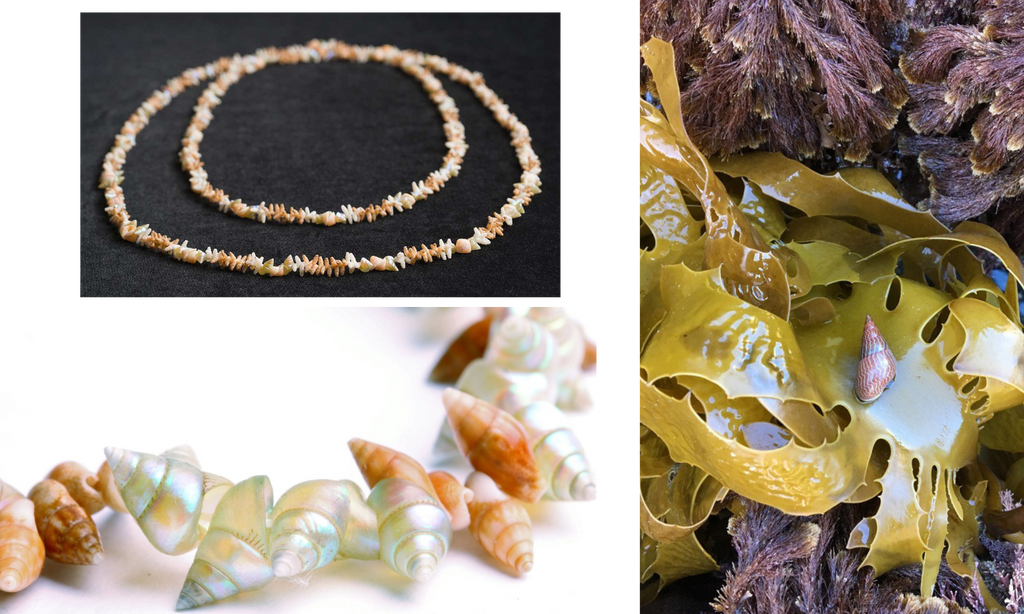The art of necklace-making is a cornerstone of Tasmanian Aboriginal women's cultural heritage
This tradition, which has persisted uninterrupted since before European colonisation in 1803, is a testament to the enduring nature of Tasmanian Aboriginal culture. Despite the significant disruptions caused by colonisation, the practice of necklace-making has continued to thrive and evolve.

TL Aunty Dulcie GReeno - National Museum Australia BL and R Aunty Lola Greeno - Australian Muesum
One of the most distinctive features of these necklaces is the use of maireener shells (Phasianotrochus irisodontes), known for their iridescent colours that range from pearly green to blue-green. These shells, along with other types like rice shells and cats' teeth shells, are carefully collected and crafted into beautiful adornments. The maireener, commonly known as the rainbow kelp shell, was originally the only shell used in this necklace-making tradition.
Necklace-making is deeply rooted in the sharing of knowledge and skills passed down through generations of women, particularly those from the Furneaux Islands off Tasmania's north-east coast. It serves as a vital cultural practice, providing an opportunity for women of all ages to gather, exchange stories, impart wisdom to younger generations, and reaffirm their cultural identity.
The tradition of necklace-making has been researched and collected by many countries since colonisation. French explorers in the 1700s were among the first to collect these cultural objects as part of a cultural exchange. Today, Tasmanian necklaces are held in collections throughout Australia and Europe, with notable examples in the Oxford and British Museums.
Shell necklace-making is the oldest continuing cultural practice in Tasmania, with archaeological evidence indicating that this tradition is approximately 2600 years old. The knowledge of shell-collecting areas and the understanding of the sea and tide levels for shell gathering are integral to this tradition. Aboriginal women living on the Furneaux Islands made shell necklaces to support their families, exchanging them for food and clothes, resulting in important collections such as the Bowman Collection held by the Furneaux Museum on Flinders Island.
The tradition has faced challenges in recent years due to global warming, which has affected kelp and seaweed growth around the islands, contributing to the erosion of seabeds and a decrease in available shells for harvest. Despite these challenges, Tasmanian Aboriginal women continue to maintain and pass down the cultural practice of necklace-making, promoting custodianship and ensuring the continuation of this significant tradition for future generations.
